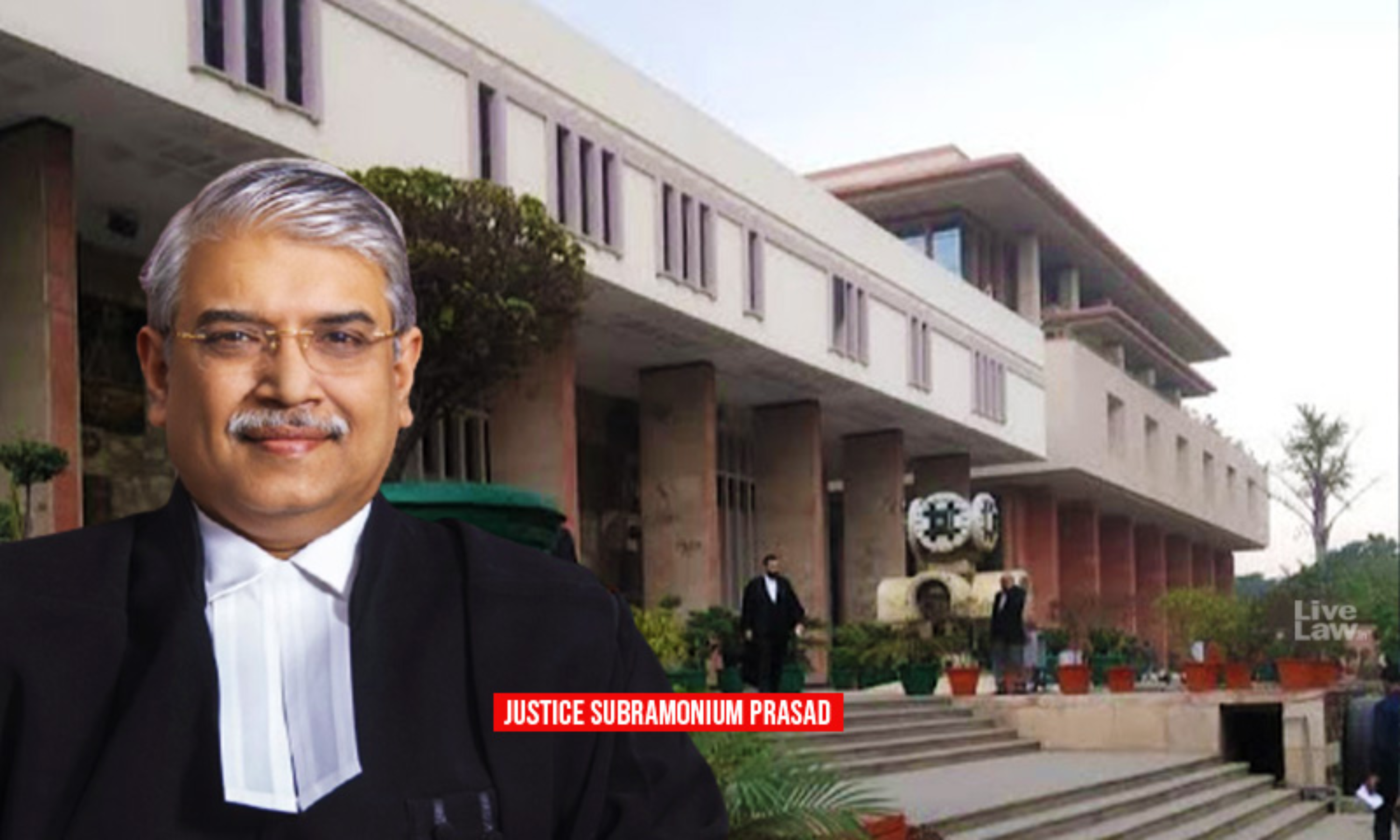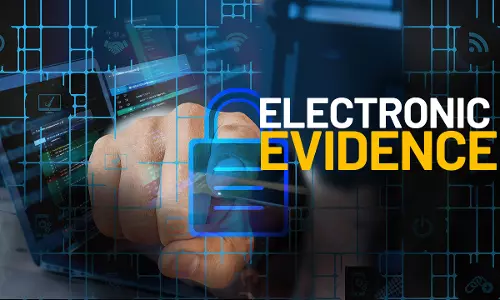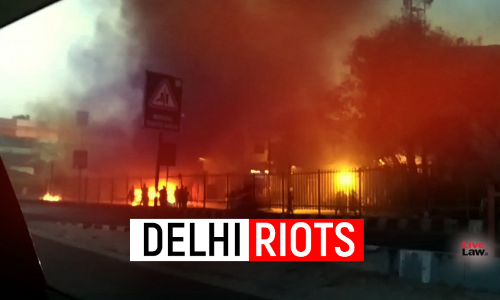‘Internet Never Forgets’: Delhi High Court Issues Directions To Authorities To Prevent Dissemination Of ‘Non-Consensual Intimate Images’

The Delhi High Court on Wednesday issued a slew of directions to the Union Government, Delhi Police and social media intermediaries to deal with cases concerning dissemination of content relating to “non-consensual intimate images” on the internet and to ensure that they are dealt in a manner that minimizes the victim’s trauma and resolves the problem expeditiously. Observing that...
The Delhi High Court on Wednesday issued a slew of directions to the Union Government, Delhi Police and social media intermediaries to deal with cases concerning dissemination of content relating to “non-consensual intimate images” on the internet and to ensure that they are dealt in a manner that minimizes the victim’s trauma and resolves the problem expeditiously.
Observing that the “internet never forgets,” Justice Subramonium Prasad said that once such content is uploaded on the internet, it becomes exceptionally difficult to control its spread.
“With the advent of the internet, its increasing access to the world at large, its ubiquity as well as with its all-encompassing nature and lack of borders, the dissemination of unlawful content by any individual can done with ease and without expeditious detection of the source of the same. As our virtual identities steadily gain more importance and space, the immortality of the internet raises questions on its impact on one’s right to privacy and right to be forgotten,” the court said.
It added that if an individual has the right to informational privacy, it also subsumes the right to be forgotten which has been held in other judgments to be the “consequence of the dignity of an individual” and a facet of right to privacy.
The court also said that that the continued existence of the content related to non-consensual intimate images on the internet does not serve any public interest and the same is punishable under section 66E of the Information Technology Act.
Directions of the Court
The court directed that where a party approaches the court for a takedown order in a matter involving circulation of content on non-consensual intimate images, an affidavit must be filed in a sealed cover by such party identifying the specific audio, visual images and key words which are complained against, in addition to the allegedly offending URLs for ex facie determination of their illegality.
“The Grievance Officer, as defined under Rule 2(1)(k), who is appointed by the intermediary for receiving complaints of the users/victims must be appropriately sensitised. The definition of NCII abuse must be interpreted liberally by the intermediaries to include sexual content obtained without consent and in violation of an individual’s privacy as well as sexual content obtained and intended for a private and confidential relationships,” the court said.
Furthermore, the court said that the “Online Cybercrime Reporting Portal”, the central platform available on cybercrime.gov.in, must have a status tracker for the complainant, commencing from filing of a formal complaint to the removal of the offending content.
“The portal must specifically display the various redressal mechanisms that can be accessed by the victim in cases of NCII dissemination. This display should be in all languages specified in the Eighth Schedule. The cybercrime.gov.in website, along with every other website of Delhi Police, should also notably display the contact details/address of each District Cyber Police Station present in the National Capital Territory of Delhi,” the court added.
It said that on receiving such information, the Delhi Police must immediately register a formal complaint in order to initiate an investigation and “bring the perpetrators to book” as soon as possible so as to prevent the repeated upload of the unlawful content.
“Every District Cyber Police Station must have an assigned Officer who must liaise with the intermediaries against which grievances have been raised by the victim who has approached the Delhi Police and an endeavour should be made to ensure that the grievance is resolved within the time schedules stipulated under the IT Rules. The intermediaries are directed to cooperate unconditionally as well as expeditiously respond to Delhi Police, and thereafter follow the time schedules under the IT Rules,” it said.
Justice Prasad also said that a fully-functioning helpline should be devised for reporting such content and that the individuals operating it must be sensitised about the nature of the content and must, under no circumstances, indulge in victim-blaming or victim-shaming.
“The reporting mechanism under Rule 3(2)(c) of the IT Rules must be conveyed to the users by the intermediaries by way of prominent display of the same on the website of the intermediary. It is necessary for users to be made aware of the reporting mechanism and the onus for educating the users lies on the intermediaries,” the court ordered.
It further directed that a trusted third-party encrypted platform may be developed by the Union Ministry in collaboration with various search engines under Rule 3(2)(c) of the IT Rules for registering the offending content or communication link by the user or victim.
“The time-frame as stipulated under Rule 3 of the IT Rules must be strictly followed without any exceptions, and if there is even minor deviation from the said timeframe, then the protection from liability accorded to a search engine under Section 79 of the IT Rules cannot be invoked by the search engine,” the court said.
The court passed the directions in a plea moved by a woman seeking directions on the Union of India to block websites operating as pornographic sites under pseudo names. The plea also sought specific directions to block her nude, sexually explicit or morphed photos appearing on the sites.
The court acknowledged the contributions made by Senior Advocate Saurabh Kirpal who was appointed the amicus curiae in the matter. Justice Prasad also acknowledged the contribution of his law researcher, Radhika Roy, for her research, assistance and inputs in the case.
Last year, the court was informed that the two accused persons were arrested after an investigation at their residence which lead to the discovery of more than 83,000 explicit pictures, including that of the petitioner woman.
Taking note of the same, the court said that the plea had become infructuous. However, it issued directions to the authorities ensure that the victims are not forced to approach the authorities or intermediaries including the search engine repeatedly for removal of any offending content.
While disposing of the matter, the court granted liberty to Kirpal to move an appropriate application for modification or clarification of the directions or suggestions issued in the matter.
The court took judicial notice of the “reluctance exhibited by intermediaries” in implementing the law, despite the existence of a legal framework governing the subject in question as well as the automated tools required to prevent the reproduction of non-consensual intimate images content that is ex facie illegal.
Title: MRS X v. UNION OF INDIA AND ORS
Citation: 2023 LiveLaw (Del) 346




